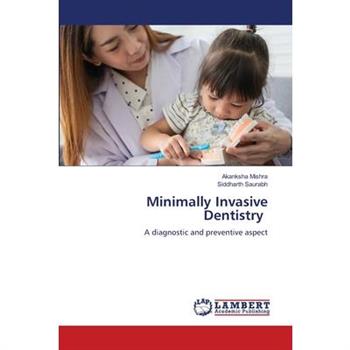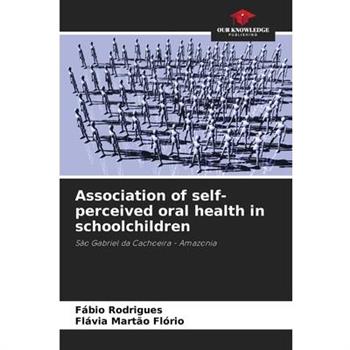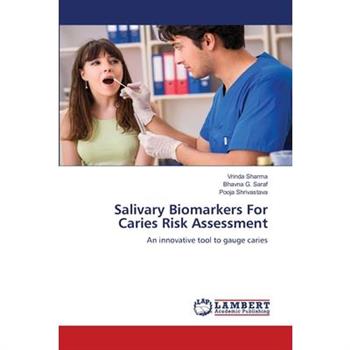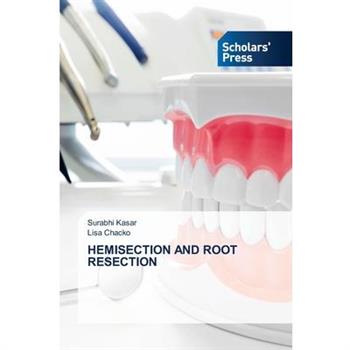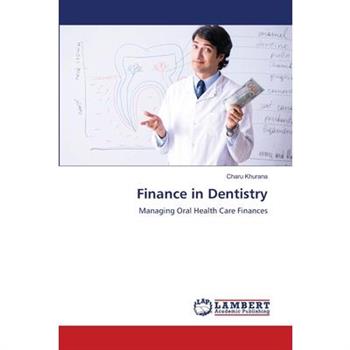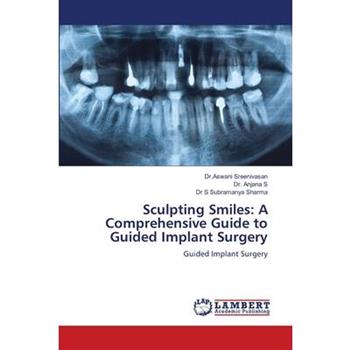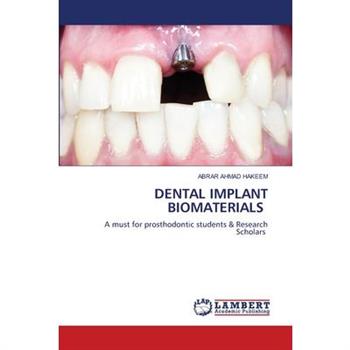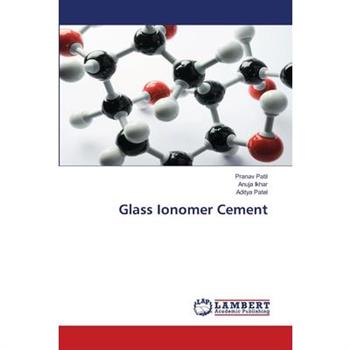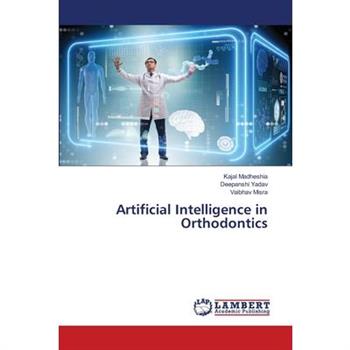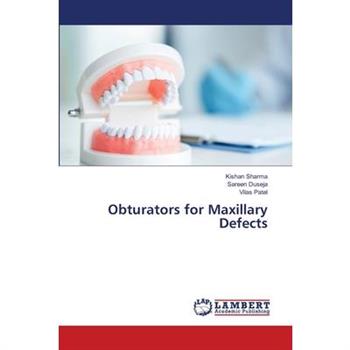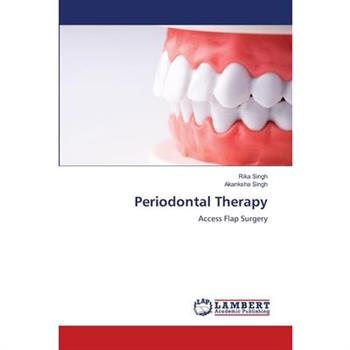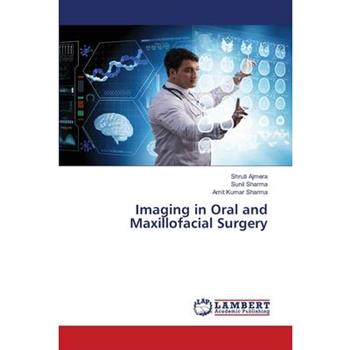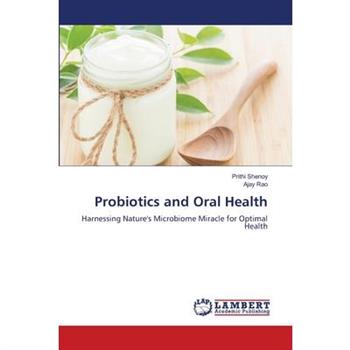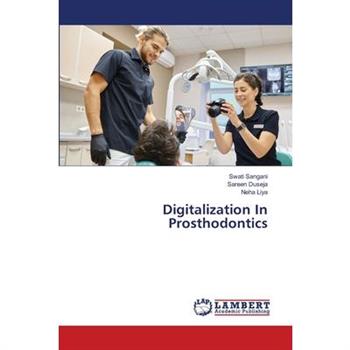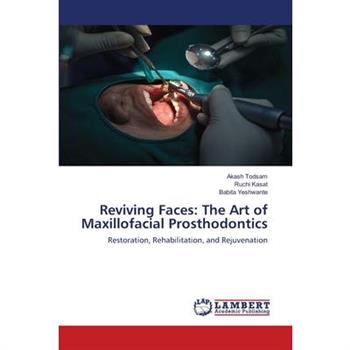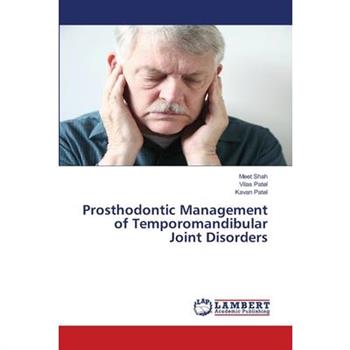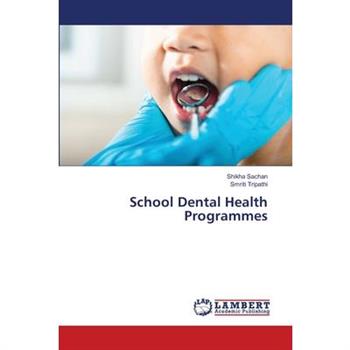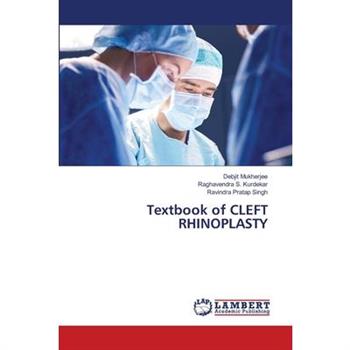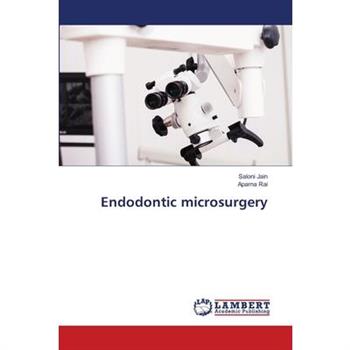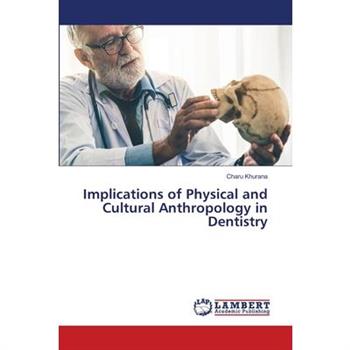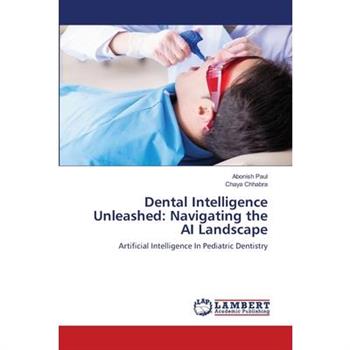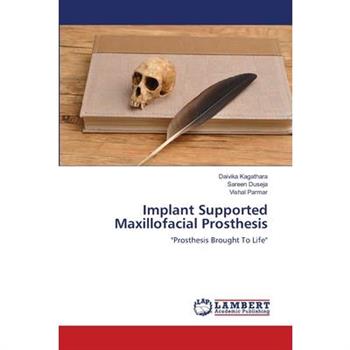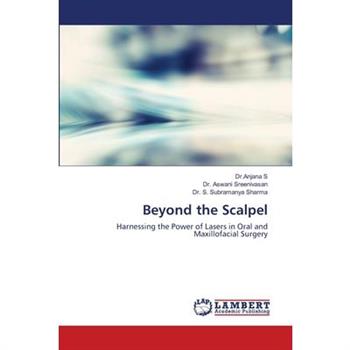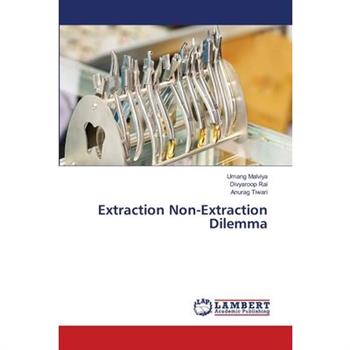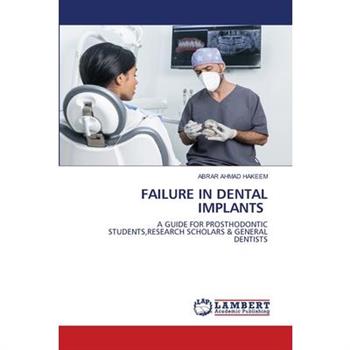Recent Advances in Esthetic Dentistry
Esthetics is the branch of philosophy that explores sensory values, commonly known as evaluations of sentiment or taste. It is a subfield of value theory or axiology. Art and the motivation behind it are both included in aesthetics. As a subfield of philosophy, aesthetics examines aesthetic evaluation techniques and aesthetic evaluation judgements. The prevention and treatment of dental disease was the main emphasis of dental practise for a long time.
Minimal Invasive Dentistry
Dental caries is one of the most common chronic infectious, communicable and multifactorial oral disease in worldwide population which is not self limiting without proper care. Upon neglecting its initial progression it leads to pulpal and periapical pathologies and tooth loss if not treated timely.Minimal invasive dentistry mainly focuses on preventing carious lesion in initial and developing stages. Therefore this book focuses mainly on early diagnosis of caries and treatment modalities that requires minimal intervention.
Vital Pulp Therapy
Vital pulp therapy aims to preserve and maintain pulpal health in teeth challenged by trauma, caries, restorative procedures, and anatomic anomalies. The treatment can be completed for permanent teeth that show reversible pulpal injuries, and outcomes depend on several factors. In order to preserve tooth structure and pulp sensibility long term, carious tissue removal should be adapted accordingly, employing a minimally invasive (MI) approach, aiming to avoid harm to the tooth and the pulp. This procedure is essential for the preservation of involved immature permanent teeth where root development is incomplete, and maintenance of arch integrity is critical during maxillofacial development.
Direct Printed Aligner
Aesthetics is a major factor in Orthodontic treatment and a primary concern among patients seeking orthodontic treatment. Clear aligner therapy is a treatment that consists of a set of clear dental appliances that are custom-made to fit the patient's teeth. These are alternative to traditional braces that are used to guide teeth into appropriate alignment. Clear aligners, like braces, utilize a progressive force to regulate tooth movement, but without the need of metal wires or brackets given by Sanjana Shetty and Naazia Shaikh. 4D printed aligners have the ability to change with time (the fourth dimension), upon given environment condition. 4D aligners generate 0.30-0.70N forces at different temperatures such as 37簞C,45簞C,55簞C which are in the range of acceptable physiological orthodontic forces. Orthodontic treatment involving clear polyurethane aligners has started dominating the market and existed for almost two decades now, it is not indicated for all type of patients. Controversies exists in the aligner's treatment. Indication in orthodontic cases without skeletal disharmonies with mild crowding, Invisalign may be suitable for even moderately complex orthodontic cases.
Precision Beams
Hard tissue lasers have revolutionized dentistry by offering precise, minimally invasive solutions for various procedures. These lasers utilize concentrated beams of light energy to accurately target and treat dental hard tissues like enamel, dentin, and bone. Their versatility allows for a wide range of applications, including cavity preparation, gum contouring, periodontal treatment, and even surgical procedures like implant placement and bone reshaping. Benefits of hard tissue lasers include reduced discomfort for patients, faster healing times, and enhanced precision compared to traditional methods. However, successful implementation requires proper training and understanding of laser physics, tissue interactions, and safety protocols. Overall, hard tissue lasers represent a cutting-edge technology that continues to advance the field of dentistry towards more efficient, patient-friendly, and effective treatments.
Soft tissue augmentation procedures around teeth and dental implants
It is well described how periodontal plastic procedures can augment keratinized tissue and increase soft tissue volume. The relationship between periodontal tissue and natural tooth-supporting tissues of an osseointegrated implant must be organized not only to anchor the implant in bone but also to form a protective soft tissue seal around teeth and implant. The maintenance of a healthy soft tissue barrier is as important as osseointegration itself for the long-term success of implant-supported prosthesis. Hence, soft tissue augmentation with autogenous grafts is a widely used procedure in dentistry. In addition to establishing functional and biological stability around teeth and implants, these procedures are indicated for augmentation of areas with a reduction or absence of keratinized tissue or for increasing soft tissue volume, especially in partially and fully edentulous patients. Soft tissue augmentation procedures have widely been used for surgical correction of localized alveolar ridge defects, for pre-prosthetic site development and for ridge preservation. Hence, this book focuses on methods to improve the soft tissue health around teeth and implants.
Recent Advances in Endodontic Instruments
Recent advances in technology have permitted the manufacture of endodontic files from Nitinol, a nickel-titanium alloy with a very low modulus of elasticity. The #15 Nitinol files have been shown to have two to three times more elastic flexibility in bending and torsion, as well as superior resistance to torsional fracture, when compared with size #15 stainless steel files manufactured by the same process.19There is minimal evidence to support the use of one method of obturation over another. All techniques have advantages and disadvantages. Decision-making should be based upon the clinical scenario, not dogma. As such, having a broad knowledge of the options helps the clinician choose the optimal technique for the tooth being treated.100Rotary endodontics in the past few years has evolved tremendously. A broader mind-set is required to accept the newer advances while still adhering to the fundamentals of scientific reasoning and rationalization. Practitioners must always bear in mind that all file systems have their pros and cons, and ultimately clinical experience, handling properties, usage safety, and case outcomes should decide the fate of a particular design or an instrument.
Barrier Membranes
Periodontitis is an inflammatory disease, often of multifactorial etiology in which the perio - pathogenic bacterial biofilm plays an important role. The disease is characterized by an inflammatory reaction of the host to the bacterial aggression, reactions on which both local and systemic risk factors can be grafted. Barrier membranes are designed to promote tissue regeneration and can be divided according to the biodegradability of the base material. In recent years, the use of biodegradable membranes has been mainstreamed in GBR, however non-biodegradable products are often applied to massive tissue loss and vertical bone defects owing to their advantages in space making. The field of barrier membranes is expanding, and the evolution of biomaterials is inevitable.
Frenum
A normal frenum attaches apically to the free gingival margin so, as not to exert a pull on the zone of the attached gingiva and usually terminating at the mucogingival junction. However, its level may vary from the height of vestibule to the crest of the alveolar ridge and even to the crest of the alveolar ridge and even to the incisal papilla area in the anterior maxilla.Frena are mostly seen in the vestibular mucosa of the mandible and maxilla, usually in the midline or premolar region. A frenulum is a small frenum. There are several frena that are usually present in a normal oral cavity. The maxillary labial frena and the lingual frena are the most notable frenum of the normal oral cavity. Among all the other frena, maxillary frena are a dynamic structure that is subjected to variations during different stages of human growth and development.
Oral health in rural children
Today, oral diseases are a public health problem affecting all segments of the population to varying degrees. Aim: To describe the oral health status of a Tunisian child population.Material and methods: A youth sample of the inhabitants of ʺCebalaʺ comprising all youngsters aged 6, 12 and 15 constituted the study population. The study spanned five months (January 2019- May 2019) Stratified cluster sampling method was adopted. Oral health status data were collected by a single examiner according to the survey form proposed by the WHO. Results: The study sample comprised 390 individuals The overall prevalence of dental caries was 38.9%. The overall CAD index was 2.5. Oral health status was significantly influenced by: dental trauma (p
Reproduce posterior occlusal morphology in fixed prosthetics
When restoring any decayed tooth, the morphology of natural teeth is always an ideal guide to be reproduced and recreated with the aim of restoring function. This applies regardless of the technique used. An intact natural tooth remains an indisputable reference in dentistry. Morphology and function are inseparable. Furthermore, occlusal morphology and occlusion are two inseparable entities. In fixed prosthetics, occlusal morphology is reproduced using the technique of sculpting by addition, respecting occlusal relationships. Today, reproduction is greatly facilitated by the biogeneric model.
Double Slot Bracket
The evolution of Orthodontics, since its beginning, have had remarkable events such as the appearance of the Straight Wire Technique, the development of varied prescriptions, the use of slots with different dimensions, skeletal anchoring systems, tomography, among others. Despite this, the designs, and features that the brackets presented were always the same and limited. The history of great ideas is vast, but they needed to be united in one piece. thus, a new bracket design has developed that feature two central slots and each with different dimensions, one slot has dimensions of 0.018" X 0.030" and the other 0.022" X 0.028" with this a lot of possibilities are being opened. it's easy to work with segmented mechanics, segmented wires, different diameters at the same time, different alloys at the same time, different movements in the same arch.
Minimally Invasive Dentistry
This work of art is truly beneficial to the quick learners, undergraduate and post graduate dental students. This book has written in the form of notes with colourful pictures, tables and schematic diagrams to make the topic more interesting and more understandable. Last moment study for exam going students. We have mentioned the Preventive and therapeutic aspects of Dental issues rights from its early diagnosis. We create awareness to the younger population and their caregivers. It comprises of almost all recent advances in dentistry.
Association of self-perceived oral health in schoolchildren
The aim of this study was to assess the association between self-perceived oral health, considering the domains of oral symptoms, functional limitation, emotional well-being and social well-being, and the history of caries in students aged 8 to 14 in the municipality of S瓊o Gabriel da Cachoeira, Amazonas - Brazil. The sample consisted of 509 students enrolled in the six municipal and state public schools in the Brazilian municipality with the highest proportion of self-declared indigenous people, S瓊o Gabriel da Cachoeira (SGC), Amazonas State, Brazil. The participants were divided into two groups, one with children aged 8 to 10 and the other with children aged 11 to 14. The epidemiological examination was carried out by a calibrated examiner (Kappa: 0.98), using the CPO-D and ceo-d indices, and self-perceived health was measured using the Child Perceptions Questionnaire CPQ8-10 and CPQ11-14 instruments, which assess four domains: oral symptoms, functional limitations, emotional well-being and social well-being. The significance of the associations between the variables was tested by bivariate analysis and the associations that showed a p-value of less than 0.25.
Salivary Biomarkers For Caries Risk Assessment
The dental caries affect the salivary proteome. Consequently saliva appears to be a potential source of biomarkers for dental caries. After the analysis of several studies, there are various proteins candidate for a biomarker role of dental caries, namely, sIgA, mucins 1 and 2, cystatin S, statherins, defensins, CD14 and glucosyltransferase B. The caries susceptibility is measured by the DMFT index, which gives information about the individual caries experience in the past and present. For the assessment of dental health at the time of the study, the DMFT fails, since it cannot distinguish the present experience from the past experience of dental caries. The criteria for dividing individuals into groups with low, moderate and high caries experience are not uniform, varying from study to study, which may contribute to conflicting results. Further studies are needed to define a benchmark to infer whether the individual has an increased risk of caries for an actuation in an early stage.
Hemisection and Root Resection
Hemisection and root resection are two surgical techniques employed in dentistry to address specific dental pathologies while aiming to preserve the natural dentition. Hemisection involves the removal of one-half of a multi-rooted tooth, typically necessitated by conditions such as severe periodontal disease affecting only one root or extensive decay confined to a specific root. Conversely, root resection entails the surgical removal of one or more roots of a multi-rooted tooth while conserving the remaining healthy roots, often indicated in cases of persistent infection or damage to a specific root. Both procedures are considered conservative alternatives to tooth extraction, offering the advantage of retaining natural tooth structure and function. Successful outcomes depend on careful patient selection, precise surgical technique, and appropriate postoperative care. Understanding the indications, limitations, and potential complications associated with hemisection and root resection is crucial for dental practitioners to effectively manage complex dental pathologies while striving to preserve the integrity of the dentition.
Dentists, Hygienists, and Cows
It's a sad truth that we dental professionals often approach patient care like we're herding cattle. In our haste to get as many patients processed we can overlook their individual needs. Now is the perfect time to upgrade our delivery of care to focus on the individual patient and build a case for a total body health approach to dental care. The tools you will fi nd in this book are repeatable and effective. They are meant to be used in service to yourself, your patients, and your practice. If you want practical strategies, with a dash of humor thrown in, this is the book for you.
Finance in Dentistry
Dental care is extremely costly and beyond most people means in developing countries. Having a great smile, not only instills confidence but also a feeling of self pride and accomplishment. However, the prohibitive cost of dental treatment has become a hindrance that deprives people from readily availing services from qualified clinicians. Paying the full price for dental treatment can be overwhelming and challenging, especially if major dental work needs to be done. This book encompasses the importance of finance in dental care, how increase in cost in dental care creates a hurdle for community and leads to an increase in dental problems. It also includes a number of mechanisms that can be opted to pay a dentist fee.
Invisible TransForce Orthodontics
Treat Yourself to a Brilliant Smile Would you like to improve your image and prospects in life? This book can change your life! Whether you are a youngster, a teenager, or an adult, if you are embarrassed to smile because of your teeth, this book will help you to smile with confidence. Do you have crooked teeth? Do your front teeth stick out? Does your chin stick out? Do you lack confidence? This is the best investment you can make in your self-image! Treat yourself to a brilliant smile!
Orthodontic Frontiers
Further enhancements in orthodontic services will rely on the implementation of new diagnostic and treatment methodologies. Emerging technologies are poised to deliver heightened precision, accuracy, and insight. These advancements equip clinicians with the tools necessary to refine treatment planning through computer modeling, testing, and simulations. Moreover, these innovative approaches also serve as invaluable assets in orthodontic education and facilitate enhanced communication with patients.
Role Of Enzymes In Periodontics
Enzymes are proteins that quicken chemical reactions to function as biological catalysts. Enzymes can interact with molecules known as substrates, and they change the substrates into other molecules known as products. Enzyme catalysis is required for nearly all of the metabolic activities in a cell to proceed at speeds quick enough to support life.Enzymes are required by metabolic pathways in order to catalyze specific steps. Enzymology is the study of enzymes, and pseudoenzyme analysis acknowledges that some enzymes have lost their capacity for biological catalysis during evolution.This book focuses on its role in Periodontics.
Sculpting Smiles
Dental Implantology is now more accurate and predictable due to guided surgery, which uses 3-D implant patient evaluation and planning to open up new avenues for a multidisciplinary, restoratively guided, and surgically driven treatment approach. Compared to freehand implant surgery, guided implant surgery offers more accurate, efficient, and effective implant insertion without endangering important anatomic dental structures. However, accurate diagnosis and case selection, the clinician's skill, care, and judgement, adherence to prosthetic and surgical principles, effective communication between the restorative dentist and the implant surgeon, and patient awareness, education, and compliance continue to be crucial success factors.
Dental Implant Biomaterials
DENTAL IMPLANT BIOMATERIALS A MUST FOR PROSTHODONTIC STUDENTS AND RESEARCH SCHOLARS. This book Dental Implant Biomaterials is specially designed for prosthodontic Student and research scholars. This book gives full details of implant biomaterials. This book will help research scholars during their curriculum related activity. This book will also be helpful for general practitioners doing implant practice.
Conglomerates of Periodontal Therapy- A comprehensive review
Chronic periodontitis is a multifactorial inflammatory disease associated with the accumulation of dental plaque, characterised by progressive destruction of the teeth-supporting apparatus, including the periodontal ligament and alveolar bone. Inorder to maximize the successful patient outcome, Clinicians need to have more efficient and effective skills to make clinical decisions based on the scientific evidence. Systematic reviews (SRs), meta-analysis (MAs) have strict protocols to reduce bias and the synthesis of research from more than one study provides a summary of multiple research studies. SRs utilize the explicit criteria for retrieval, assessment and synthesis of evidence from individual RCTs and other well controlled methods. It also provides a way of managing large quantities of information and making it easy to keep current with new research. MAs is a statistical process used to combine the data from individual studies in SR which increase the precision of estimates of treatment. This book is a comprehensive array of treatment modalities in surgical and non-surgical periodontal therapies.
Guided Regeneration
GTR is a technique for fixing periodontal issues to increase the stability and support of a tooth or group of teeth. Bacteria that get lodged behind the gums can cause periodontal disease, also known as periodontitis, which is a persistent illness. The hard and soft tissues supporting the teeth deteriorate as a result. This can occasionally result in spaces forming between the teeth and the bone. A bone transplant is a separate treatment that is frequently required to address these gaps, also known as bony defects.This Book focuses on the different types of regenerative techniques.
Glass Ionomer Cement
Glass ionomers apparently play a useful part in restorative dentistry. In addition to its excellent properties it provides sufficient scope for modification and improvement. Glass ionomer cements are very aptly referred to as "Man made dentin" as well as "dentin substitute". It is more than fifty years since the introduction of the glass ionomer cement family to the dental profession. After a slow start on the way they can now be regarded as well understood and thoroughly researched materials with very wide applications.
Tiney Tiny Turner What's That Smell!
From award-winning author Webilor Ediale, comes the next book in the fun relatable series Tiney Tiny Turner: What's that Smell! A book to teach your children about personal hygiene and learning good hygiene habits to keep them germs-free. Covering key topics such as smelly breath, messy hair, body smells, stinky feet and dirty hands. Tiney Tiny Turner loves to help his friends stay clean, but when he discovers he needs a lesson or two on hygiene himself, it makes this whole adventure more interesting. Will Tiny and his friends learn fun and exciting ways to keep clean and keep the stink away? Find out in this cool adventure all about friendship and keeping body parts smelling fresh with lots of fun along the way. This book is perfect for: Boys and girls ages 5-10.Teachers' preschool through Year 6.Parents and grandparents with little ones in their lives.Anyone looking to teach children about personal hygiene, friendship and good habits.Any child struggling with changes in their body.Children will love this book!It has fun, colorful and engaging illustrations.It's a fun and adventurous story.It has characters kids can relate to.Teachers, parents and other caregivers will love it too!It is beautiful and professionally done.It's a story that will support children/students who are experiencing hygiene challenges.It would help you create a positive classroom/home environment.It would teach kids all about personal hygiene, and friendship and help your children develop good habits.It would help support organizations and companies with their well-being and hygiene initiatives.
Biomimetic Enamel Remineralizing Agents
Biomimetic agents play a crucial role in reducing white spot lesions by mimicking the natural processes of enamel remineralization and repair. These agents are designed to enhance the tooth's natural ability to remineralize damaged enamel, thereby reversing early signs of decay and preventing the progression of white spot lesions. Biomimetic materials typically contain bioactive components such as calcium, phosphate, and fluoride, which are essential for remineralizing enamel and restoring its strength and integrity. By delivering these essential minerals directly to the tooth surface, biomimetic agents promote the formation of new hydroxyapatite crystals, the main mineral component of enamel, and help repair the demineralized areas. Additionally, biomimetic materials often have adhesive properties, allowing them to bond effectively to the tooth surface and provide long-lasting protection against further demineralization. Overall, the use of biomimetic agents in dental care represents an innovative approach to preventing and treating white spot lesions, offering patients a minimally invasive and effective solution for maintaining optimal oral health.
Artificial Intelligence in Orthodontics
Artificial intelligence (AI) is revolutionizing orthodontics by enhancing diagnostics, treatment planning, and patient care. AI algorithms analyze dental images, such as X-rays and 3D scans, improving the accuracy of identifying dental anomalies and streamlining diagnostics. In treatment planning, machine learning predicts and simulates outcomes, allowing orthodontists to tailor interventions more precisely. Virtual treatment monitoring systems, powered by AI, enable remote tracking of patient progress, reducing in-person visits and improving patient compliance. AI-powered chatbots and virtual assistants streamline administrative tasks and enhance communication between orthodontic professionals and patients. Despite these advancements, ethical considerations and data privacy remain critical in the ongoing integration of AI into orthodontic practices. Overall, AI promises to deliver more personalized, efficient, and effective orthodontic care.
Obturators for Maxillary Defects
The treatment goal in the restoration of acquired palatal defects is to achieve normal function and appearance. Two categories of treatment are suggested: conventional prosthetic rehabilitation of a defect with an obturator prosthesis or surgical reconstruction of the defect. The obturator prosthesis continues to be the most common procedure for the rehabilitation of maxillectomy patients. Fabrication of obturator prostheses depends on the application of basic prosthodontic principles that are used in the treatment of patients without maxillary defects. Some principles must be modified because of the defect and the character and position of the remaining structures. The defect, in conjunction with the remaining structures, must be used to provide support, retention and stability of obturator prosthesis.
Periodontal Therapy
Dental surgery known as periodontal surgery is used to prevent or treat abnormalities of the bone, gingiva, or alveolar mucosa that are caused by trauma, development, anatomy, or plaque. Chronic periodontitis is defined as an inflammatory disease of the supporting tissues of teeth caused by groups of specific microorganisms, resulting in progressive destruction of the periodontal ligament and alveolar bone with either pocket formation or recession, or both. The aim of effective treatment of periodontal diseases is to arrest the inflammatory disease process by removing the subgingival biofilm to establish a local environment compatible with periodontal health. So, this book Focuses on the different types of Periodontal Flap Surgery.
Imaging in Oral and Maxillofacial Surgery
From its modest origins, radiographic imaging of the maxillofacial region has come a long way. Over time, significant progress has been made, and radiology has had a significant influence on maxillofacial surgery practice. The planning and execution of suitable and timely therapy, as well as the detection of maxillofacial disease conditions, are greatly aided by these advancements in imaging technology. Since radiology plays a significant role in the practice of maxillofacial surgery, it is imperative that Maxillofacial surgeons have a fundamental understanding of the ideas behind the various imaging modalities, their similarities and differences, and how imaging aids in both diagnosing a patient's clinical condition as well as the management.
Probiotics and Oral Health
"Probiotics and Oral Health" delves into the intricate relationship between probiotics and oral wellness, uncovering their potential in promoting a healthy mouth and overall well-being. This book navigates through various aspects of probiotics' impact on oral health, providing insights into their definition, historical context, sources, and and its application. The book extends its exploration to special populations, particularly children with unique oral health needs. It delves into the potential benefits of probiotics in managing oral health challenges in special children, offering strategies for optimizing oral hygiene and addressing specific concerns. "Probiotics and Oral Health" serves as a comprehensive guide, bridging the gap between scientific research and practical applications in oral care. It empowers readers to leverage the potential of probiotics for cultivating a healthy smile and fostering optimal oral wellness.
Digitalization In Prosthodontics
This book explores the transformative impact of digital technology on various aspects of prosthodontics, highlighting advances in digital imaging, computer-aided design, internet communication, digital manufacturing, and new materials. The book discusses the influence of digitization on teaching, patient education, practice management, and clinical treatment procedures in contemporary prosthodontics. From digital radiographs facilitating diagnoses to CAD-CAM ceramics improving aesthetics and function, the utilization of rapid prototyping and stereolithography for prosthesis fabrication, the technologies discussed promise higher predictability, convenience, and reduced treatment sessions. However, the adoption of new treatment protocols is not without controversy, necessitating further research and validation. The book emphasizes the need for future clinical research to focus on evidence-based dentistry and standardized methods, providing opportunities to advance complete denture therapy and contribute to dental education, public health programs, and clinical research.
Recent Trends in Composite
The use of direct resin based composite materials has become an active part of contemporary Operative Dentistry. The esthetic appearance associated with conservative cavity preparations and the constantly improved properties has made these materials main choice for all classes of restorations. Resin composites have gone through generations of traditional composites to microhybrid composites and nano composites. Furthermore improvements in optimization of properties and development of new techniques for placement have made restoration of direct composite more predictable.
Reviving Faces
This book provides a comprehensive overview of the field of maxillofacial prosthodontics, offering a detailed exploration of techniques, technologies, and best practices for restoring and rehabilitating facial structures. From congenital anomalies to traumatic injuries and oncologic resections, each chapter delves into the multifaceted aspects of maxillofacial prosthetic rehabilitation, guided by the principles of precision, aesthetics, and patient-centered care. With contributions from leading experts in the field, this book serves as an invaluable resource for dental professionals, oral surgeons, and interdisciplinary teams involved in the treatment of patients requiring maxillofacial prosthetic intervention.
Prosthodontic Management of Temporomandibular Joint Disorders
Prosthodontic management of temporomandibular disorders (TMD) involves the diagnosis, treatment, and prevention of issues affecting the temporomandibular joint (TMJ) and associated muscles. This book briefs about the temporomandibular joint disorders and its prosthodontic management. TMD can manifest as pain, clicking, limited movement, or other symptoms in the jaw joint and surrounding areas. The prosthodontic approach to managing TMD typically begins with a comprehensive evaluation, including patient history, clinical examination, and imaging studies like X-rays or MRI. This helps identify the underlying cause and extent of the disorder. Treatment options vary based on the specific needs of each patient but may include: Occlusal splints, prosthodontic interventions, physical therapy and stress management techniques. Overall, prosthodontic management of TMD aims to alleviate pain, restore proper function, and improve the overall quality of life for patients experiencing temporomandibular joint disorders.
School Dental Health Programmes
Schools provide an important setting for promoting health, as they reach over one billion children worldwide and through them, the school staff, families and the community as a whole. School health programmes are field-based programmes that promote oral health, disease prevention and access to dental care for school children. School dental screening was capable of stimulating dental attendance. Dental health education is part of the curriculum in many school systems around the world. convincing the public and the community that oral health is an important part of their overall health, and it should be practiced right from the school going age to be effective and meaningful.
Textbook of CLEFT RHINOPLASTY
Rhinoplasties in cleft lip and palate (CLP) patients are considered one of the most difficult and challenging surgeries to carry out. The reasons understood for this are twofold: the principal reason being the simultaneous involvement of all the layers of the nose, including the skin, cartilage, skeleton and vestibular lining, and the other the significant scarring that accompanies multiple previous surgical interventions. The deformity has a major impact on nasal aesthetics as well as function and can range from being absolutely inconspicuous to catastrophic. This Book summarizes concepts of nasal physiology, cleft lip an palate and cleft nasal repair.
Endodontic microsurgery
Endodontic microsurgery includes the most recent advances in microsurgical techniques. Comprehensive in scope, the book's coverage includes microsurgical instruments, case selection, soft tissue management, beveling, root end filling, perforation repair, root amputation, bone grafting, palatal surgery, sinus management, mental nerve management, outcome assessment, post-operative management and more. Designed to be accessible and practical to guide readers through various steps of the procedures and how to use the surgical microscope in order to see details that cannot otherwise be detected, leading to more successful outcomes.
Atomic Habits in Dentistry
In the book "Atomic Habits in Dentistry," the author delves into the transformative power of small, consistent actions in the field of dentistry. Drawing on the principles of atomic habits, the book explores how tiny changes in behavior can lead to remarkable improvements in dental practices. From refining patient communication to enhancing clinical skills, the narrative emphasizes the importance of cultivating positive habits to create lasting professional success. With practical insights and real-life examples, the book serves as a guide for dental professionals seeking to implement incremental changes that can have a profound impact on their daily routines, patient outcomes, and overall professional satisfaction. It offers a compelling perspective on the role of habits in dentistry and empowers practitioners to build a foundation of excellence through intentional, atomic shifts in their professional lives.
Implications of Physical and Cultural Anthropology in Dentistry
Anthropology is a search, an investigation into what we are now, from where we came and how we got to be the way we are today. To divine the future of man it is necessary to look back into past and search for clues left behind in the sands of time. The study of man and his evolution is not complete and additional knowledge will only help us understand ourselves better. An appreciation of dental variations within and between populations provides the phylogenetic and ontogenetic perspective upon which sound clinical practice should be based.
Dental Intelligence Unleashed
Artificial intelligence (AI) is rapidly revolutionizing pediatric dentistry, profoundly impacting diagnostic accuracy, treatment personalization, patient experiences, educational approaches, and research endeavours within the field. Leveraging advanced machine learning algorithms like convolutional neural networks (CNNs), AI enables precise and efficient detection of dental pathologies such as caries, malocclusions, and developmental anomalies, facilitating early interventions and optimized treatment plans tailored to each child's unique needs. Additionally, AI-driven predictive analytics tools forecast disease progression, allowing dentists to anticipate challenges and adjust treatment strategies proactively. In education, AI-powered virtual reality (VR) simulations provide immersive learning experiences, educating children about oral hygiene practices while alleviating dental anxiety. Furthermore, AI enhances access to care through tele-dentistry platforms and chatbots, extending services to underserved populations.AI analyses vast datasets to uncover insights into disease mechanisms, treatment responses, and risk factors, driving innovation in pediatric dental healing.
Implant Supported Maxillofacial Prosthesis
Implant-supported maxillofacial prostheses play a crucial role in restoring both the aesthetic appearance and functional abilities of individuals who have suffered facial disfigurement due to trauma, cancer, or congenital defects. By utilizing dental implants as stable anchors, these prostheses offer enhanced stability, durability, and comfort compared to conventional adhesive-based prostheses. They enable patients to regain confidence in their appearance and speech, facilitating social integration and improving overall quality of life. Additionally, implant-supported maxillofacial prostheses contribute to restoring proper facial symmetry and occlusion, which can positively impact chewing, swallowing, and overall oral health. Through their customizable design and precise fitting, these prostheses provide tailored solutions to meet the unique needs of each patient, offering a comprehensive approach to facial rehabilitation.
Beyond the Scalpel
Lasers have quickly become indispensable in Oral and Maxillofacial Surgery as a modality for the treatment of soft tissue surgery. As laser technology has advanced, so too has its use within the expanding scope of Oral and Maxillofacial Surgery. Lasers not only allow surgeons to enhance current surgical options for treatment but also have contributed to the evolution of a variety of new procedures in Oral and Maxillofacial Surgery. The incorporation of lasers into the practice of Oral Maxillofacial Surgeons has led to exciting advances in surgical therapy and improved patient care. Advances in laser technology undoubtedly will yield new procedures and have a major role in the future of minimally invasive surgery.
Extraction Non-Extraction Dilemma
"Extraction vs. Non-Extraction Dilemma in Orthodontics" is a comprehensive exploration of one of the most debated topics in orthodontic treatment. Authored by Dr. Umang Malviya, the book delves into the complexities surrounding the decision to extract teeth or pursue non-extraction methods in orthodontic care.The book begins by examining the historical context of extraction and non-extraction techniques, tracing their evolution over time and the factors that have influenced their usage. It then delves into the clinical considerations that orthodontists must weigh when making treatment decisions, including patient age, severity of malocclusion, facial aesthetics, and long-term stability.Through a combination of case studies, research findings, and expert opinions, the author presents a balanced analysis of the advantages and disadvantages of extraction and non-extraction approaches. Key topics covered include the impact on facial profile, occlusal stability, treatment duration, and patient satisfaction.
Failure in Dental Implants
FAILURE IN DENTAL IMPLANTS A GUIDE FOR PROSTHODONTIC STUDENTS, RESEARCH SCHOLARS & GENERAL DENTISTS A book for Prosthodontic students and research scholars that will guide them during the training and research activities.This book will also help general dentists to get a full insight of failures related to dental implants.This book is tailored made and has elaborated various classification related to implant failures.
Cbct - A Diagnostic Tool
Periodontal disease has a high prevalence in many countries. The early detection of periodontal disease is important in preventing tooth loss, and subsequently, maintaining the patient's general health. The current diagnostic approaches including clinical probing and intraoral radiography have shown several limitations in their reliability. Conventional diagnostic methods for periodontal disease include probing gingival tissues and performing radiographs to evaluate bony support. Radiographs give us information about the amount and type of alveolar bone defect. Hence, they are valuable in the detection of bone defects, the estimation of their severity, the evaluation of the treatment outcome, and making prognosis.Using two-dimensional (2D) radiographic methods, we can only observe the interproximal surfaces, and as a result, bone loss may be underestimated due to having a 2D view of three-dimensional (3D) structures.CBCT as a diagnostic tool is widely used in dentoalveolar surgeries, implantology, general /specialized dentistry (orthodontics, endodontics, periodontics, and forensic dentistry), and otolaryngology.

















